Teaching Pre-Implementation Measurement
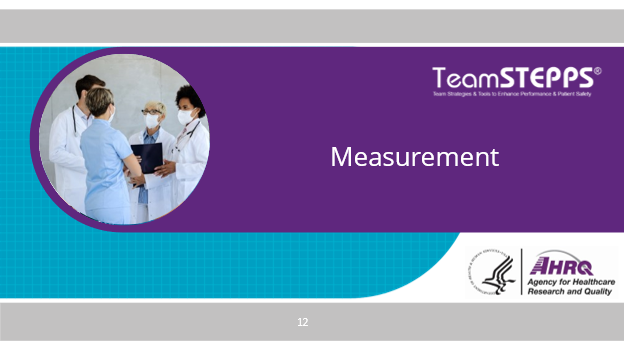
Present Slide 12, “Measurement.” Use this slide to introduce the topic of measurement and note that it is key to all organizational improvement initiatives.
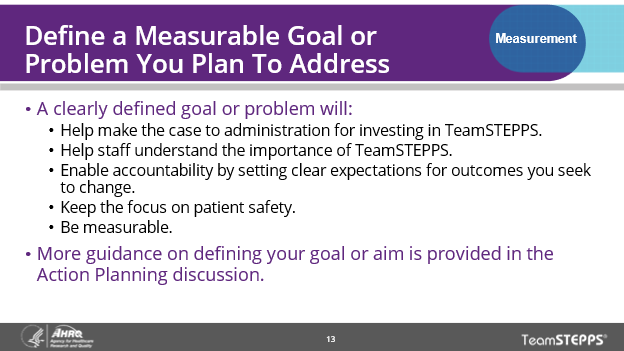
In discussing Slide 13, “Define a Measurable Goal or Problem You Plan To Address,” it’s important to stress that TeamSTEPPS always should have a defined goal or be introduced in response to a clearly identified problem you seek to address. If the goals are unclear, any accomplishments through TeamSTEPPS may not be possible to realize. Also explain that effective measurement requires clarity about the problem and what observable changes are expected.
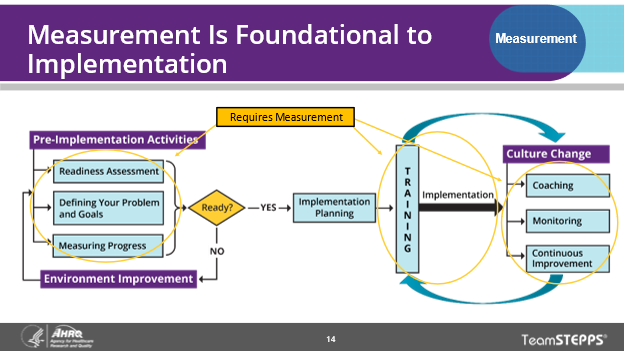
Present Slide 14, “Measurement Is Foundational to Implementation.” As you introduce the concept of measurement, note that it’s an important topic throughout the implementation process. It is being discussed as a pre-implementation topic because quantifying your problem at the beginning is important and so is measuring your readiness to implement TeamSTEPPS.
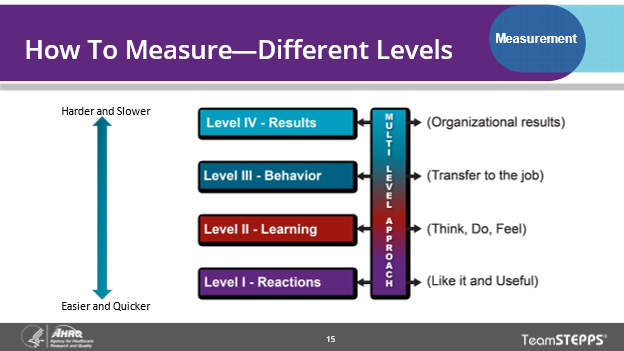
Present Slide 15, “How To Measure,” noting that all measures likely to be used during a TeamSTEPPS implementation can be classified based on a widely used grouping of measures developed by Kirkpatrick and used in adult education. Explain that the first two levels are primarily used to assess reactions and learning after trainings, while behavior changes and results are what make TeamSTEPPS worthwhile. Stress the need for TeamSTEPPS to ultimately change results or outcomes within your organization.
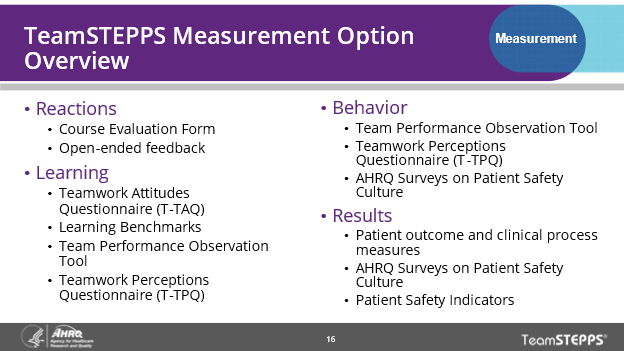
Present Slide 16, “TeamSTEPPS Measurement Option Overview”; use this slide to illustrate types of measures available on the TeamSTEPPS and other AHRQ websites that can be used to evaluate TeamSTEPPS trainings and outcomes.
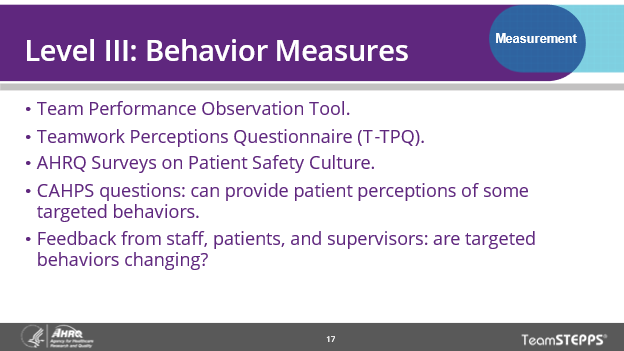
In displaying Slide 17, “Level III: Behavior Measures,” briefly note the types of level III measures included on the website.
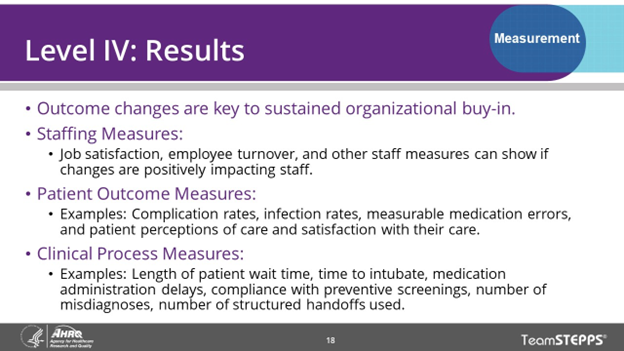
Present Slide 18, “Level IV: Results.” Briefly note the types of level IV measures included on the website. It’s important to emphasize that behavior and results measures are most important to the success of your overall implementation. If members of your class intend to use specific tools, you may want to spend more time discussing them. Have the class share outcome or process measures that they would like to use TeamSTEPPS to improve.
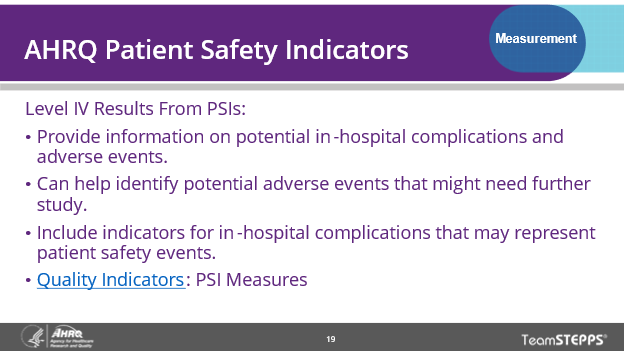
In discussing Slide 19, “AHRQ Patient Safety Indicators,” you may (if it’s relevant) want to note that the AHRQ PSIs are useful tools for tracking outcome changes.
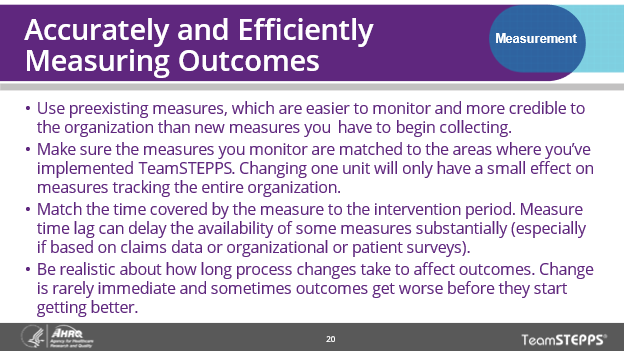
Present Slide 20, “Accurately and Efficiently Measuring Outcomes.” Because outcomes are often neglected during TeamSTEPPS implementation, discuss each bullet on this slide. In addition, you may want to discuss these insights with the Change Team your organization has formed to lead the TeamSTEPPS implementation, to aid them as they select measures and begin to evaluate whether targeted outcomes are improving.
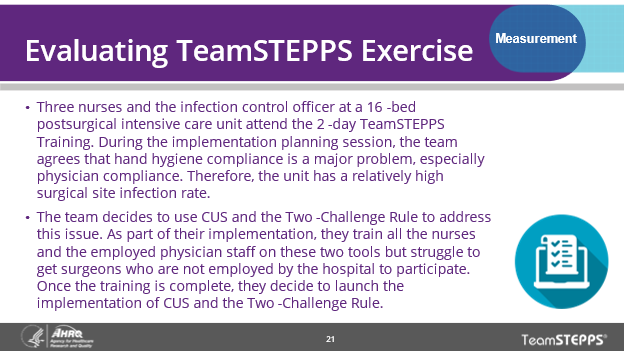
Present Slide 21, “Evaluating TeamSTEPPS Exercise.” If you have time, the exercise on this slide is a useful way to consolidate and reinforce the discussion of measurement. Ask the class questions such as:
- When would you be most concerned about measuring reactions and learning?: (after the trainings)
- What process and outcome measures would be of most concern?: handwashing (process), surgical site infection rates (outcomes)
- What would be important to consider when gathering data on these process and outcome measures?: (Were the data from the units participating; were there data before and after the implementation; how long after the training were you expecting the changes in processes and outcomes to occur?)



